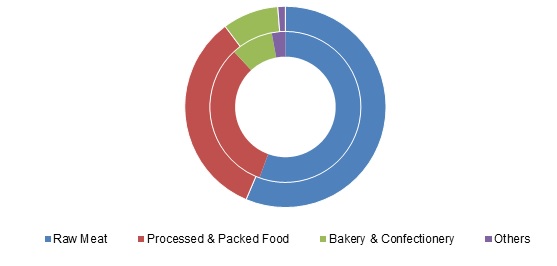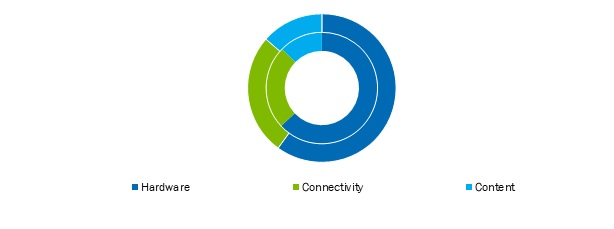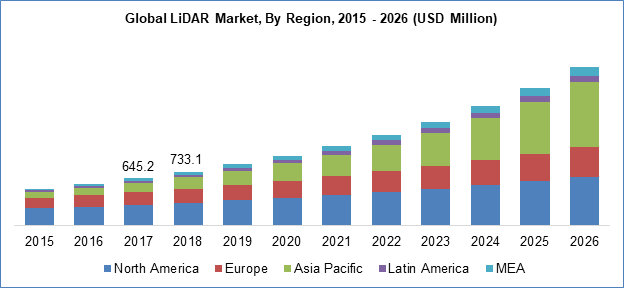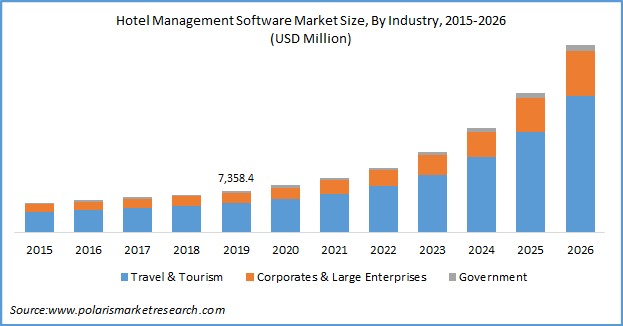“New study published by Polaris Market Research the aluminum curtain wall market is anticipated to reach over USD 55.3 billion by 2026. and is anticipated to grow at a CAGR of more than 9.3% during the forecast period. In 2017, the unitized curtain wall segment dominated the global market, in terms of revenue. Asia-Pacific is expected to be the leading contributor to the global market revenue during the forecast period.”
Download Sample Copy of this research report @ https://www.polarismarketresearch.com/industry-analysis/aluminum-curtain-wall-market/request-for-sample
Several stringent energy consumption regulations passed by governments worldwide have boosted the adoption of aluminum curtain walls across the globe. Growing concerns regarding environment, increasing trend towards energy efficient buildings, and moisture management required in commercial buildings further support the growth of this market. Additionally, the increasing acceptance of green buildings and reducing operation costs would boost market growth during the forecast period. Other factors supporting market growth include supportive government regulations, increasing awareness, and technological advancements. Increasing investments by vendors in technological advancements coupled with research and development further boost the market growth.
Segment Analysis
The global aluminum curtain walls market is segmented on the basis of type, application, and region
Aluminum Curtain Wall Market By Type (Stick-Built, Unitized, Semi-Unitized);
Aluminum Curtain Wall Market By Application (Residential, Commercial, Public);
Aluminum Curtain Wall Market By Regions (North America [U.S., Canada], Europe [Germany, UK, France, Italy, Spain, Belgium, Netherlands, Rest of Europe], Asia-Pacific [China, India, Japan, South Korea, Singapore, Malaysia, Rest of Asia-Pacific], Latin America [ Brazil, Mexico, Argentina, Rest of Latin America], Middle East and Africa [Israel, South Africa, Saudi Arabia, UAE, Rest of MEA])
The demand for aluminum curtain walls has increased over the years owing to increasing energy concerns, and environment consciousness across the globe. The lower operation costs, installation costs, energy efficiency, and high quality are features offered by aluminum curtain walls, which has increased its adoption. Limited awareness among consumers has limited the adoption of these curtain wall systems in the past. However, with significant government initiatives and substantial investments, the adoption of aluminum curtain walls has accelerated significantly.
Browse summary of this report with TOC @ https://www.polarismarketresearch.com/industry-analysis/aluminum-curtain-wall-market
Competitive Landscape and Key Vendors
The different types of aluminum curtain walls available in the market include stick-built, unitized, and semi-unitized. In 2017, the unitized aluminum curtain wall segment accounted for the highest market share. Use of unitized aluminum curtain wall offers benefits such as increased energy efficiency, reduced operational cost, lower installation costs, reduced labor costs, and enhanced protection.
The well-known companies profiled in the report include EFCO Corporation, HansenGroup Ltd., Kalwall Corporation, National Enclosure Company, Sapa Building Systems Ltd., Ponzio Srl, Kawneer Company, Inc., Josef Gartner GmbH, GUTMANN AG, Alumil Aluminium Industry S. A, HUECK System GmbH & Co. KG, and Schüco International among others. These companies launch new products and collaborate with other market leaders to innovate and launch new products to meet the increasing needs and requirements of consumers.
Asia-Pacific generated the highest revenue in the market in 2017, and is expected to lead the global market throughout the forecast period. The increasing demand of aluminum curtain wall in the region is owing to increasing trends of energy efficient buildings, and rising environmental concerns. Public structures commercial buildings are adopting aluminum curtain walls owing to stringent government regulations regarding energy usage, and the need to reduce operation costs. Numerous key players have adopted partnership and expansion strategies to increase their market share in aluminum curtain wall markets of the Asia-Pacific region.
*If you have any special requirements, please let us know and we will offer you the report as you want. inquire before buying @ https://www.polarismarketresearch.com/industry-analysis/aluminum-curtain-wall-market/inquire-before-buying






